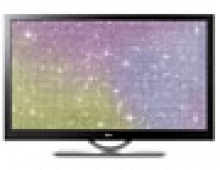
HDTV's Copy-Protection Prison
h the cost of high-definition TV sets continuing to drop and HD programming's availability rising, it's more than a little disappointing that sophisticated gear such the Microsoft Media Center PC has such limited ability to handle HDTV.
When equipped with a digital tuner, Media Center can show and record HD programming, but only from local broadcast stations -- no ESPN, no HDNet, no HBO. The DirecTV HD receiver, which incorporates a TiVo digital video recorder, has a similar limitation.
The difficulty is with the unsettled state of copy protection for HD programming rather than any technical issue. Until now, HD content has been sent out unprotected over cable and satellite systems. With some new Federal Communications Commission rules in place and equipment capable of recording HD video hitting the market, content owners are starting to apply protection -- but the hardware and software needed to allow video recorders to comply with the protection schemes aren't ready.
Joe Belfiore, general manager of Microsoft's (MSFT) eHome group, says uncertainty about just how to handle content protection forced the decision to limit HD capabilities in the new version of Windows XP Media Center Edition announced Oct. 12. He says two basic ways exist to get HD content from cable into the Media Center PC: "One was for us, in effect, to become the cable set-top box."
SHORT-LIVED SOLUTION. Under the FCC's "plug-and-play" cable rules, consumer-electronics makers can equip receivers, recorders, or other gear that handles HD cable with a "cable slot." A "cable card" that fits in the slot performs the functions of the set-top box, communicating with the cable network to see that you get the premium content you've paid for and respect any copying or retransmission restrictions imposed by the content owners. The problem is that these cable cards are not yet commercially available.
The other method would be to use a FireWire (or IEEE 1394) connection to get HD content from an existing digital set-top box to the Media Center PC. One problem with this approach is that not all digital cable boxes are equipped with the required FireWire connection. An even bigger concern is that this method would probably cease to work as more programmers protected their content.
"Ultimately, it's all going to be protected," says Belfiore. "Any work we did to take advantage of unprotected content would necessarily be short-lived."
FUNDAMENTAL BLOCKAGE. Once the hardware is ready, probably early next year, Microsoft plans to upgrade the Media Center to allow display and recording of HD cable content (satellite may be problematic because the FCC's plug-and-play rules apply only to cable). Some considerable technical challenges still remain.
To read the entire article, click at the 'Source' icon!
The difficulty is with the unsettled state of copy protection for HD programming rather than any technical issue. Until now, HD content has been sent out unprotected over cable and satellite systems. With some new Federal Communications Commission rules in place and equipment capable of recording HD video hitting the market, content owners are starting to apply protection -- but the hardware and software needed to allow video recorders to comply with the protection schemes aren't ready.
Joe Belfiore, general manager of Microsoft's (MSFT) eHome group, says uncertainty about just how to handle content protection forced the decision to limit HD capabilities in the new version of Windows XP Media Center Edition announced Oct. 12. He says two basic ways exist to get HD content from cable into the Media Center PC: "One was for us, in effect, to become the cable set-top box."
SHORT-LIVED SOLUTION. Under the FCC's "plug-and-play" cable rules, consumer-electronics makers can equip receivers, recorders, or other gear that handles HD cable with a "cable slot." A "cable card" that fits in the slot performs the functions of the set-top box, communicating with the cable network to see that you get the premium content you've paid for and respect any copying or retransmission restrictions imposed by the content owners. The problem is that these cable cards are not yet commercially available.
The other method would be to use a FireWire (or IEEE 1394) connection to get HD content from an existing digital set-top box to the Media Center PC. One problem with this approach is that not all digital cable boxes are equipped with the required FireWire connection. An even bigger concern is that this method would probably cease to work as more programmers protected their content.
"Ultimately, it's all going to be protected," says Belfiore. "Any work we did to take advantage of unprotected content would necessarily be short-lived."
FUNDAMENTAL BLOCKAGE. Once the hardware is ready, probably early next year, Microsoft plans to upgrade the Media Center to allow display and recording of HD cable content (satellite may be problematic because the FCC's plug-and-play rules apply only to cable). Some considerable technical challenges still remain.
To read the entire article, click at the 'Source' icon!



















